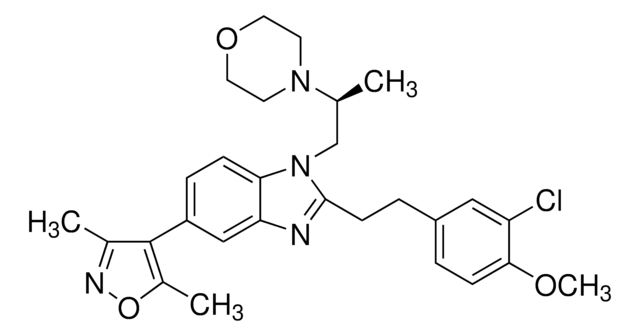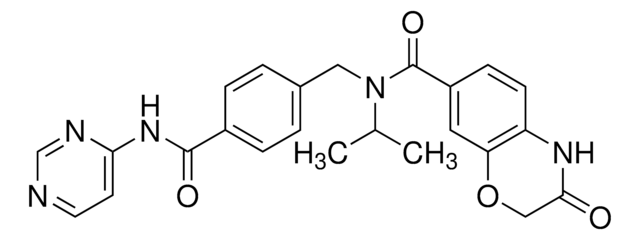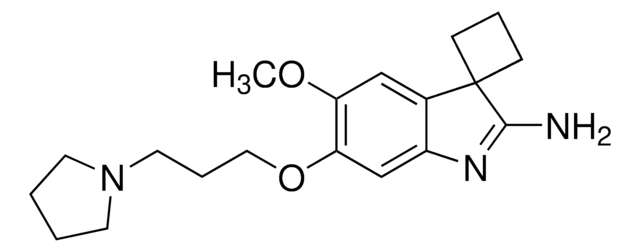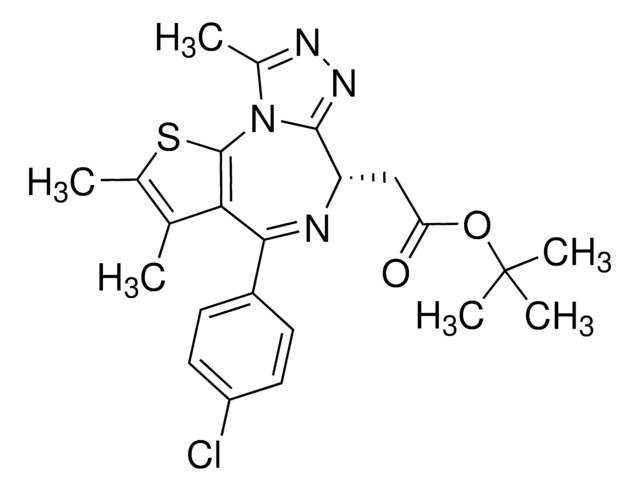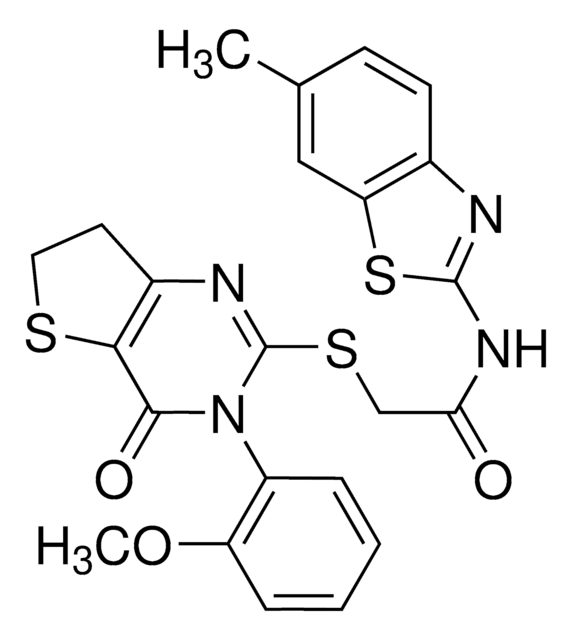SML1107
SGC0946
≥98% (HPLC)
Sinonimo/i:
1-(3-((((2R,3S,4R,5R)-5-(4-Amino-5-bromo-7H-pyrrolo[2,3-d]pyrimidin-7-yl)-3,4-dihydroxytetrahydrofuran-2-yl)methyl)(isopropyl)amino)propyl)-3-(4-(tert-butyl)phenyl)urea, 5-Bromo-7-[5-deoxy-5-[[3-[[[[4-(1,1-dimethylethyl)phenyl]amino]carbonyl]amino]propyl](1-methylethyl)amino]-beta-D-7H-Pyrrolo[2,3-d]pyrimidin-4-amine
About This Item
Prodotti consigliati
Saggio
≥98% (HPLC)
Forma fisica
powder
Colore
white to beige
Solubilità
DMSO: 20 mg/mL, clear
Temperatura di conservazione
−20°C
Stringa SMILE
BrC1=CN([C@@H]2O[C@H](CN(CCCNC(NC3=CC=C(C(C)(C)C)C=C3)=O)C(C)C)[C@@H](O)[C@H]2O)C4=C1C(N)=NC=N4
InChI
1S/C28H40BrN7O4/c1-16(2)35(12-6-11-31-27(39)34-18-9-7-17(8-10-18)28(3,4)5)14-20-22(37)23(38)26(40-20)36-13-19(29)21-24(30)32-15-33-25(21)36/h7-10,13,15-16,20,22-23,26,37-38H,6,11-12,14H2,1-5H3,(H2,30,32,33)(H2,31,34,39)/t20-,22-,23-,26-/m1/s1
IQCKJUKAQJINMK-HUBRGWSESA-N
Azioni biochim/fisiol
SGC0649 is the negative control for the active probe, SGC0946. To request a sample of the negative control from the SGC, click here.
To learn about other SGC chemical probes for epigenetic targets, visit sigma.com/sgc
Caratteristiche e vantaggi
Altre note
Prodotti correlati
Avvertenze
Danger
Indicazioni di pericolo
Consigli di prudenza
Classi di pericolo
Acute Tox. 3 Oral
Codice della classe di stoccaggio
6.1C - Combustible acute toxic Cat.3 / toxic compounds or compounds which causing chronic effects
Classe di pericolosità dell'acqua (WGK)
WGK 3
Punto d’infiammabilità (°F)
Not applicable
Punto d’infiammabilità (°C)
Not applicable
Certificati d'analisi (COA)
Cerca il Certificati d'analisi (COA) digitando il numero di lotto/batch corrispondente. I numeri di lotto o di batch sono stampati sull'etichetta dei prodotti dopo la parola ‘Lotto’ o ‘Batch’.
Possiedi già questo prodotto?
I documenti relativi ai prodotti acquistati recentemente sono disponibili nell’Archivio dei documenti.
Il team dei nostri ricercatori vanta grande esperienza in tutte le aree della ricerca quali Life Science, scienza dei materiali, sintesi chimica, cromatografia, discipline analitiche, ecc..
Contatta l'Assistenza Tecnica.